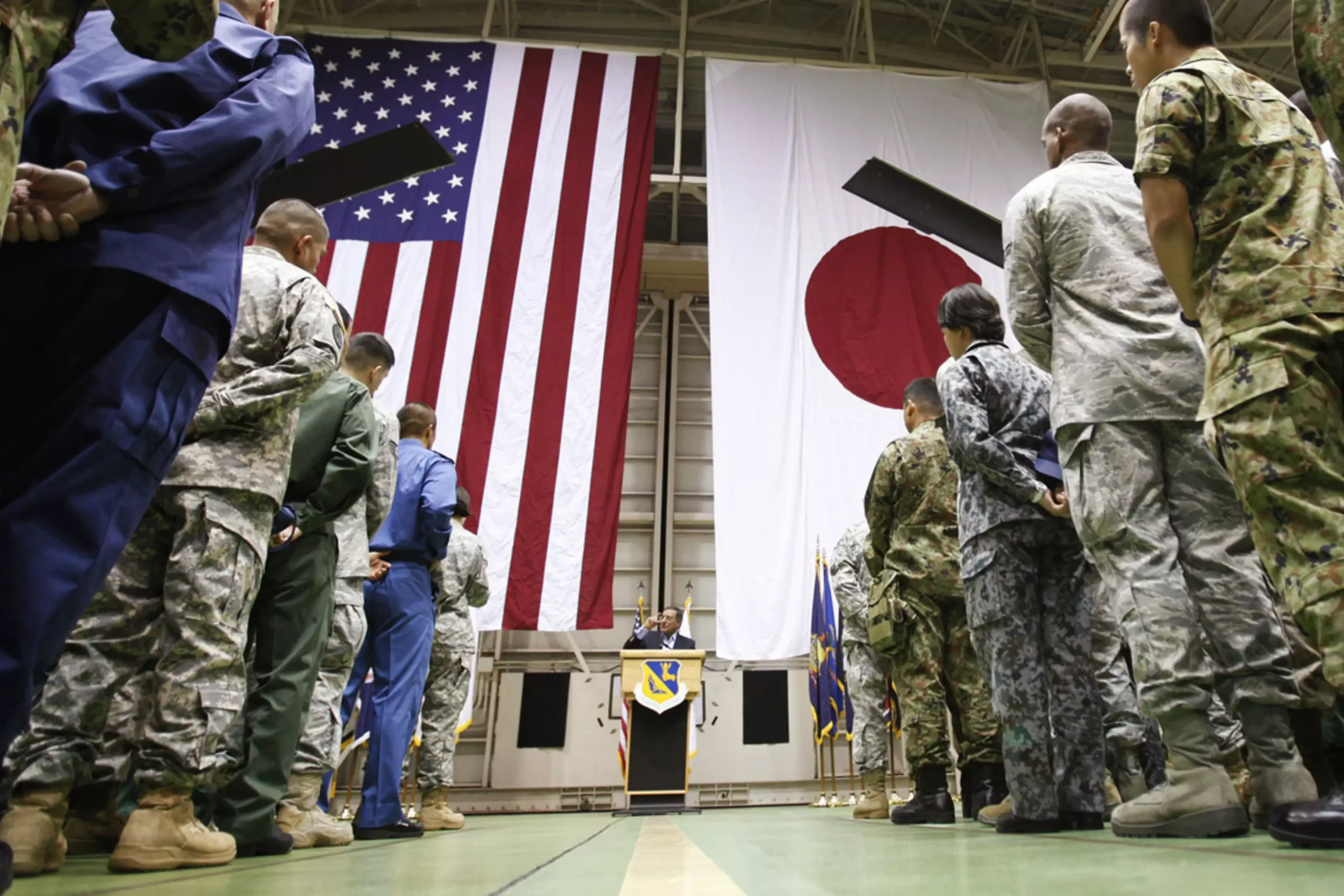The U.S.-Japan security alliance is as important as ever to both countries’ interests in Asia. In recent years, a more assertive China, a nuclear-armed North Korea, and other challenges have pushed the alliance to make historic adjustments. Long-running conflicts over issues such as bases on Okinawa and cost-sharing continue to rankle the partnership. Japan has relied on the U.S. nuclear umbrella to deter potential aggressors. In 1967, Prime Minister Eisaku Sato established the Three Non-Nuclear Principles.
The 1990–91 Gulf War spurred debate in Japan about whether its constitution allowed the SDF to join the coalition to expel Iraq from Kuwait. After the fall of the Soviet Union, allies adopted new guidelines that expanded where Japan’s military could operate. Japanese Prime Minister Shinzo Abe’s successors have mostly shared his foreign policy outlook, viewing China’s increasing power with concern and supporting increased defence spending. Japan has committed to working with the United States to improve space, cyber, and maritime awareness capabilities and deepen science and tech cooperation. The alliance has also extended to addressing nonmilitary threats, including climate change.
In April 2021, President Biden and Prime Minister Suga announced a climate partnership, agreeing to boost cooperation on green technologies and promote decarbonized infrastructure. Japan and the U.S. have been working on missile defence since 1998 when North Korea fired a ballistic missile into the Sea of Japan. Since then, North Korea has launched dozens of missiles over Japan and claims it can mass-produce medium-range missiles. The threat has led some in Japan to push for acquiring nuclear weapons for self-defence and missiles for preemptive strikes.
Since the Taiwan Strait Crisis, China’s rapid rise has been a top concern for the U.S.-Japan alliance. At the heart of tensions between China and Japan is a long-standing territorial dispute over Senkaku/Diaoyu Islands. Recent administrations have shifted strategic focus to the Indo-Pacific in response to China’s increased assertiveness. Tokyo remains concerned about China’s military rise and has angered Beijing by voicing concerns over its maritime actions and human rights abuses. Thirty-one of the eighty-five U.S. military facilities in Japan are on Okinawa, despite it being the poorest and among the smallest of Japan’s prefectures.
Many Okinawan’s recent military activities in the prefecture, were the site of one of the bloodiest battles during World War II. In a bid to ease tensions, the United States and Japan agreed in 2006 to relocate Futenma to a less populated area on Okinawa and transfer eight thousand Marines to Guam. The United States and Japan differ on how much each country contributes to the NATO alliance. The United States spends $1.9–2.5 billion per year on base operation, military construction, and housing costs in Japan. Japan provides land, labour, and utilities for stationing U.S. forces throughout the country. While negotiations for a new, five-year contract are still underway, the Biden administration agreed to extend the current arrangement with Japan for another year.
The Japan-U.S. alliance has become more balanced as Japan has boosted its defence capabilities. The countries’ joint response to the 2011 earthquake and tsunami marked the largest bilateral mission in the history of the alliance. In 2018, Tokyo announced a five-year plan to spend a total of $240 billion on defence, a record amount.















